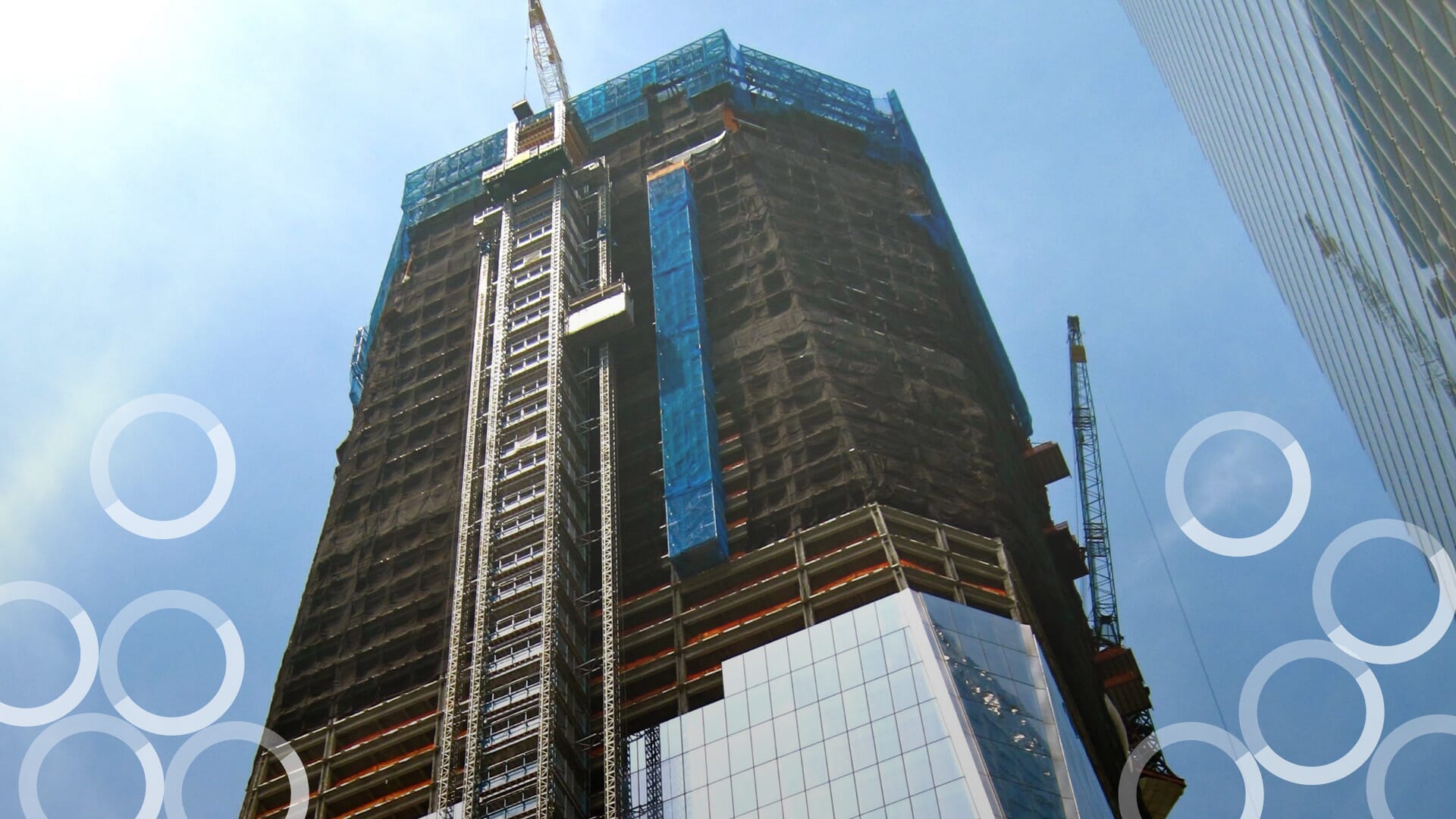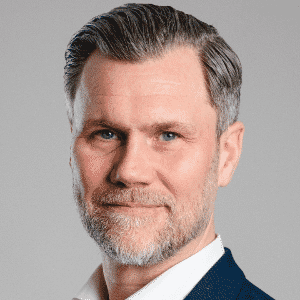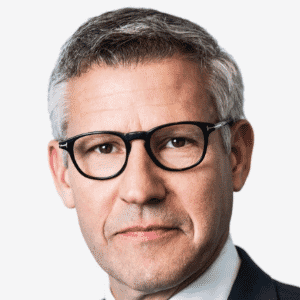 No attribution required
No attribution requiredCEE markets seem to be nearing top of the clock – What now?
Get to know Chris Zeuner (Amstar) and Colliers perspectives for the next phase of the real estate cycle.
February 14, 2019Real Estate
“We’re nearing the top of the clock in terms of the cycle,” says Chris Zeuner, head of Europe at US-based real estate private equity investor Amstar, commenting on the current state of Europe’s various economies. “We’ve had 12 years of growth, we know its a cycle - it isn’t going to be any different. When is it going to end? Is it in six months or 12 months? We don’t know.”
Zeuner’s feeling that the economies of countries across Europe are ‘at the top of the clock’ is echoed by real estate consultants Colliers, which states in a January 2019 report that construction markets in the CEE are overheated. In its analysis of the development boom and state of construction markets across CEE’s office and industrial sectors, Colliers points out that office development as a proportion of total stock in CEE-6 capital cities is now at cyclical highs of 10%-20%.
Colliers forecasts that demand for new construction orders will deteriorate moderately from 2019-20, choked off by soaring development costs (which rose c. 5% - 17% over the last twelve months for typical office projects in capital city central business districts) which are feeding through into higher selling prices for buildings.
Development costs may yet rise further, according to Colliers, driven principally by serious labour shortages and continuing rises in labour costs: national wages in the CEE-6 are expected to increase by around 5%-10% in 2019. Hungary, states Colliers, appears to have the most severe labour and materials cost worries, while Romania’s move to increase the minimum wage for construction workers by 58% year-on-year in 2019 “indicates real strain on construction labour supply.”
Supporting its own analysis, Colliers draws upon Eurostat’s ESI surveys, observing that its data on sentiment towards the economies of the CEE-6 has good predictive power when it comes to sentiment for new construction orders. EU ESI data shows that CEE-6 economic sentiment peaked in February 2018 and has tracked down since; based on a six-month lag, the data coincides with a top in in construction new orders sentiment in August 2018 and predicts a mild deterioration in construction new orders sentiment in the first half of 2019.
Fully priced assets
From an opportunistic perspective, the timing of when you invest is key, remembers Zeuner. “At the moment, no matter what asset class you look at, in any segment or anywhere in Europe, you are paying a very high price on an historic basis - and that price might look even higher x-amount of years from now, when there’s been a drop-off. Fundamentally, asset prices will have to come down at some point - and I think that’s in the near-term, more than in the long-term.”
Zeuner sees cap rate compression as the main risk for opportunistic investors: “I do not see much room for further cap rate compression. So if you’re going to be planning to exit over a three-to-four-year period, as an investment product, you have to assume that there could be cap rate expansion.”
As a recent example of how fully priced the CEE market has become, Zeuner mentions a distressed property offered around, which was in a great location, where the bank was ready to foreclose and where the developer had almost but quite not completed building. “They just ran out of money, and the discount being offered was 10%, effectively,” says Zeuner. “For me, if it’s distressed, you look at a 40% discount. Maybe there is someone who will buy a distressed asset at 10%. But for me, if distressed discounts are getting to such a small level, then I think things are really fully priced.”
Finding the right deal structure
Any opportunistic investor, explains Zeuner, will be looking for a 20%+ IRR and an equity multiple of say 1.7X. “Those deals are achievable,” says Zeuner, “but it takes an awful lot more work to find those deals, to underwrite them on a realistic basis, and to understand what your downside can be and how can you protect as much of those returns as possible.”
Given the difficulty of achieving 20%+ IRR returns in western European markets at present, Zeuner comments that, “on that basis, if for no other, central Europe is an interesting market for any opportunistic investor. It’s not to say that there are not opportunistic deals in other markets, but in central Europe you’re more likely to find something that will give you those returns on a risk-adjusted basis.”
Rather than focusing on a particular or interesting segment, Zeuner adds that it is more about finding a deal structure that works: “From an opportunistic perspective, that means working out where to put your equity in the capital stack - is there a way that you can protect your downside, as well as benefit from some upside? We look at deals where we spend a lot more time focusing on what the potential downside is, than on what the potential upside is.”
Future challenges
Looking at sectors where there is growing interest amongst investors, Zeuner points to the rise of PRS throughout Europe: “It’s a changing market dynamic not just for investors, but for occupiers as well - a mental change for people to go from wanting to own their own home to being comfortable renting.”
Another big swing for the industry, says Zeuner, concerns the environment: “The construction sector, in many respects, hasn’t changed for 100 years. As an industry and as investors, we should probably pay more intention to using more environmentally-friendly methods of construction, How many investors are really asking how was this constructed? When you get the big insurance companies, the huge multi-managers, deciding that they’re going to have a preference for an investment product that has been constructed in a certain manner, then there’ll be a financial incentive and you’ll see developers changing, for the benefit of the environment.”
CEE real estate markets will be discussed further at CEE GRI 2019 on 14-15 May in Warsaw.
Zeuner’s feeling that the economies of countries across Europe are ‘at the top of the clock’ is echoed by real estate consultants Colliers, which states in a January 2019 report that construction markets in the CEE are overheated. In its analysis of the development boom and state of construction markets across CEE’s office and industrial sectors, Colliers points out that office development as a proportion of total stock in CEE-6 capital cities is now at cyclical highs of 10%-20%.
Colliers forecasts that demand for new construction orders will deteriorate moderately from 2019-20, choked off by soaring development costs (which rose c. 5% - 17% over the last twelve months for typical office projects in capital city central business districts) which are feeding through into higher selling prices for buildings.
Development costs may yet rise further, according to Colliers, driven principally by serious labour shortages and continuing rises in labour costs: national wages in the CEE-6 are expected to increase by around 5%-10% in 2019. Hungary, states Colliers, appears to have the most severe labour and materials cost worries, while Romania’s move to increase the minimum wage for construction workers by 58% year-on-year in 2019 “indicates real strain on construction labour supply.”
Supporting its own analysis, Colliers draws upon Eurostat’s ESI surveys, observing that its data on sentiment towards the economies of the CEE-6 has good predictive power when it comes to sentiment for new construction orders. EU ESI data shows that CEE-6 economic sentiment peaked in February 2018 and has tracked down since; based on a six-month lag, the data coincides with a top in in construction new orders sentiment in August 2018 and predicts a mild deterioration in construction new orders sentiment in the first half of 2019.
Fully priced assets
From an opportunistic perspective, the timing of when you invest is key, remembers Zeuner. “At the moment, no matter what asset class you look at, in any segment or anywhere in Europe, you are paying a very high price on an historic basis - and that price might look even higher x-amount of years from now, when there’s been a drop-off. Fundamentally, asset prices will have to come down at some point - and I think that’s in the near-term, more than in the long-term.”
Zeuner sees cap rate compression as the main risk for opportunistic investors: “I do not see much room for further cap rate compression. So if you’re going to be planning to exit over a three-to-four-year period, as an investment product, you have to assume that there could be cap rate expansion.”
As a recent example of how fully priced the CEE market has become, Zeuner mentions a distressed property offered around, which was in a great location, where the bank was ready to foreclose and where the developer had almost but quite not completed building. “They just ran out of money, and the discount being offered was 10%, effectively,” says Zeuner. “For me, if it’s distressed, you look at a 40% discount. Maybe there is someone who will buy a distressed asset at 10%. But for me, if distressed discounts are getting to such a small level, then I think things are really fully priced.”
Finding the right deal structure
Any opportunistic investor, explains Zeuner, will be looking for a 20%+ IRR and an equity multiple of say 1.7X. “Those deals are achievable,” says Zeuner, “but it takes an awful lot more work to find those deals, to underwrite them on a realistic basis, and to understand what your downside can be and how can you protect as much of those returns as possible.”
Given the difficulty of achieving 20%+ IRR returns in western European markets at present, Zeuner comments that, “on that basis, if for no other, central Europe is an interesting market for any opportunistic investor. It’s not to say that there are not opportunistic deals in other markets, but in central Europe you’re more likely to find something that will give you those returns on a risk-adjusted basis.”
Rather than focusing on a particular or interesting segment, Zeuner adds that it is more about finding a deal structure that works: “From an opportunistic perspective, that means working out where to put your equity in the capital stack - is there a way that you can protect your downside, as well as benefit from some upside? We look at deals where we spend a lot more time focusing on what the potential downside is, than on what the potential upside is.”
Future challenges
Looking at sectors where there is growing interest amongst investors, Zeuner points to the rise of PRS throughout Europe: “It’s a changing market dynamic not just for investors, but for occupiers as well - a mental change for people to go from wanting to own their own home to being comfortable renting.”
Another big swing for the industry, says Zeuner, concerns the environment: “The construction sector, in many respects, hasn’t changed for 100 years. As an industry and as investors, we should probably pay more intention to using more environmentally-friendly methods of construction, How many investors are really asking how was this constructed? When you get the big insurance companies, the huge multi-managers, deciding that they’re going to have a preference for an investment product that has been constructed in a certain manner, then there’ll be a financial incentive and you’ll see developers changing, for the benefit of the environment.”
CEE real estate markets will be discussed further at CEE GRI 2019 on 14-15 May in Warsaw.







